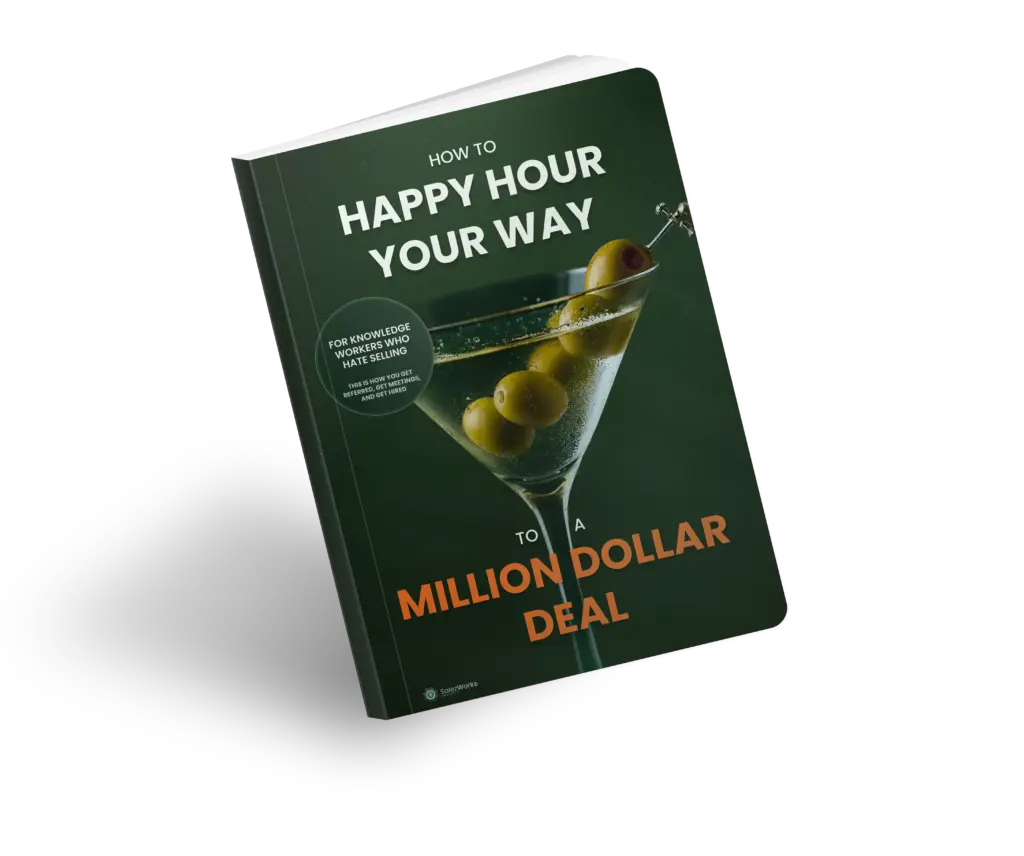When was the last time you got a spam call?
If you’re like most people, it was probably within the last few hours. Maybe it was someone wanting to extend your car warranty, offer you a line of credit with an instant approval process or what about those tax credits? They’re still around? And if you’re like most people, you either didn’t pick up or hung up within seconds.
Now imagine you’re a CEO, and instead of one spam call, you’re getting a dozen. Every day. Plus 120 sales emails. Plus LinkedIn messages from strangers. Plus voicemails promising to “revolutionize your business.”
Welcome to the reality that killed cold outreach.
The golden age of cold calling and cold emailing didn’t die from regulation or technology—it died from its own success. What once was a pathway to decision-makers has become a graveyard of ignored emails, blocked numbers, and deleted voicemails. The very tactics that made cold outreach initially effective have created an environment so saturated with pitches that prospects have developed an almost impenetrable immunity to traditional sales approaches.
The Numbers Don’t Lie: Inside the Saturated Inbox
The statistics paint a stark picture of the modern executive’s daily reality. The average C-level executive now receives approximately 120 sales emails per day—that’s one sales pitch every four minutes during a standard eight-hour workday. This figure represents a 300% increase from just five years ago, when the average was closer to 40 daily sales emails.
But the problem extends far beyond email. LinkedIn has become another battleground, with executives reporting an average of 15-20 connection requests daily from salespeople, most accompanied by immediate pitches. Cold calls haven’t escaped this trend either—decision-makers now field an average of 8-12 unsolicited sales calls per day, leading many to simply stop answering unknown numbers entirely.
The response rates tell the full story of this oversaturation crisis:
- Email open rates for cold outreach have plummeted from 24% in 2018 to just 8% in 2024
- Response rates have fallen even more dramatically, from 4.5% to a mere 0.8%
- Cold call pickup rates have dropped from 35% to under 12% in the same timeframe
- LinkedIn connection acceptance rates from unknown salespeople hover around 15%, down from 45% just three years ago
The Attention Economy: Why Prospects Have Tuned Out
Think about your own morning routine. You wake up, grab your phone, and immediately face a barrage of notifications. Emails, texts, app alerts, news updates—all competing for your precious attention before you’ve even had coffee.
Now multiply that by ten if you’re a C-level executive.
In today’s hyper-connected world, attention has become the scarcest commodity. Executives aren’t just drowning in information—they’re fighting for their lives against it. Every email, every call, every LinkedIn message is a potential time thief, pulling them away from running their business.
The modern prospect’s day begins with what I call “the great deletion.” They open their inbox not looking for opportunities, but scanning for threats to their time and focus. Subject lines get a millisecond evaluation—anything that smells like a sales pitch gets the digital death sentence. This isn’t personal—it’s survival.
The psychological impact of oversaturation cannot be understated. When prospects are bombarded with hundreds of nearly identical messages promising to “revolutionize their business” or “increase revenue by 200%,” the natural response is to tune out entirely. What marketers call “banner blindness” in digital advertising has evolved into “pitch blindness” in sales communication.
This defensive posture extends beyond just ignoring messages. Many executives have implemented what we might call “preemptive blocking”—automatically filtering emails with certain keywords, setting LinkedIn to only accept connections from known contacts, and instructing assistants to screen all calls. The very people salespeople need to reach have erected digital fortresses around their attention.
The Evolution of Buyer Behavior: Research Replaces Relationships
Here’s a question: When was the last time you bought something expensive without researching it first?
Probably never. You read reviews on Amazon, checked Reddit forums, watched YouTube unboxings, and maybe even asked friends for recommendations. You did your homework before anyone tried to sell you anything.
Business buyers are no different—except their “homework” is incredibly thorough.
Modern buyers complete an average of 67% of their purchase journey before ever talking to a salesperson. They’re not sitting around waiting for a cold email to educate them about solutions. When they’re ready to buy, they go hunting for information themselves.
And boy, do they have options for research:
- Comprehensive review platforms like G2, Capterra, and Trustpilot for detailed product comparisons
- Peer networks through LinkedIn groups and industry forums for real-world feedback
- Content libraries including case studies, white papers, and video testimonials
- Free trial and freemium models that allow hands-on product evaluation
This abundance of information has created what researchers call “research-empowered buyers”—prospects who arrive at sales conversations more informed than many of the salespeople they’re speaking with. They don’t need education; they need validation and customization.
The implication is profound: cold outreach that attempts to educate or create awareness is no longer valuable. Buyers who aren’t actively researching solutions won’t engage with cold outreach, while those who are researching already have better sources of information than an unsolicited email from a stranger.
The Rise of Peer Recommendations: Trust in the Age of Skepticism
In response to oversaturation and information overload, decision-makers have increasingly turned to their most trusted source: peer recommendations. Rather than sifting through countless sales pitches, executives are asking their networks for direct recommendations and referrals.
The data on peer influence is striking:
- 92% of B2B buyers are more likely to purchase after reading a recommendation from someone in their network
- Peer recommendations are considered 5x more trustworthy than any form of vendor marketing
- Word-of-mouth referrals have a 37% higher retention rate than customers acquired through other methods
- LinkedIn endorsements from industry peers influence purchasing decisions for 78% of executives
This shift represents a fundamental change in how trust is established in business relationships. Where cold outreach attempts to build trust through messaging and positioning, peer recommendations provide instant credibility through social proof. A single recommendation from a trusted colleague carries more weight than a dozen perfectly crafted cold emails.
The network effect has also been amplified by social platforms designed specifically for professional relationship building. Private Slack communities, exclusive LinkedIn groups, and industry-specific forums have created intimate spaces where executives freely share recommendations and warnings about vendors. These closed networks have become the new gatekeepers of business development.
The New Prospecting Reality: Requirements for Modern Markets
The death of traditional cold outreach doesn’t mean the death of prospecting—it means evolution. Successful sales organizations are adapting to this new reality by fundamentally changing their approach to prospect engagement.
Warm introductions have become the new cold calls. Progressive sales teams now invest heavily in relationship mapping, identifying connections between their network and target prospects. They’re building “introduction engines” that can systematically generate warm referrals rather than hoping cold outreach will break through the noise.
Content-driven attraction has replaced interruption marketing. Rather than pushing messages to prospects, successful companies are creating valuable content that draws prospects to them. This includes industry research, tool comparisons, and educational resources that prospects discover during their self-directed research phase.
Community building has emerged as a long-term prospecting strategy. Companies are creating and participating in industry communities, hosting events, and facilitating peer-to-peer learning. These activities build relationships and trust over time, positioning the company as a helpful resource rather than just another vendor.
Account-based research has reached new levels of sophistication. Modern prospecting requires deep understanding of target accounts, including their challenges, initiatives, and stakeholder dynamics. This research enables personalized engagement that goes far beyond using the prospect’s name in an email template.
Multi-threaded relationship building has become essential. Rather than targeting a single decision-maker with repeated outreach, successful teams map entire buying committees and build relationships across multiple stakeholders simultaneously.
The Bottom Line: Adaptation or Extinction
The statistics are clear, the trends are undeniable, and the writing is on the wall: traditional cold outreach as we know it is dead. The very tactics that made it initially successful—scale, persistence, and interruption—have created an environment where those same tactics are now counterproductive.
But this isn’t a crisis for sales professionals who are willing to adapt. The same forces that killed cold outreach—buyer empowerment, network effects, and information abundance—have created new opportunities for building relationships and generating revenue. The companies that will thrive are those that align their prospecting strategies with how modern buyers actually want to research, evaluate, and purchase solutions.
The future belongs to sales organizations that can build trust before they need it, provide value before they ask for it, and earn the right to a prospect’s attention rather than demanding it. In a world where prospects receive 120 sales emails per day, the only message that matters is the one they actually want to receive.
Speaking of which, I’ve gotta go collect a case study from a happy client. That’s how business gets done these days.







